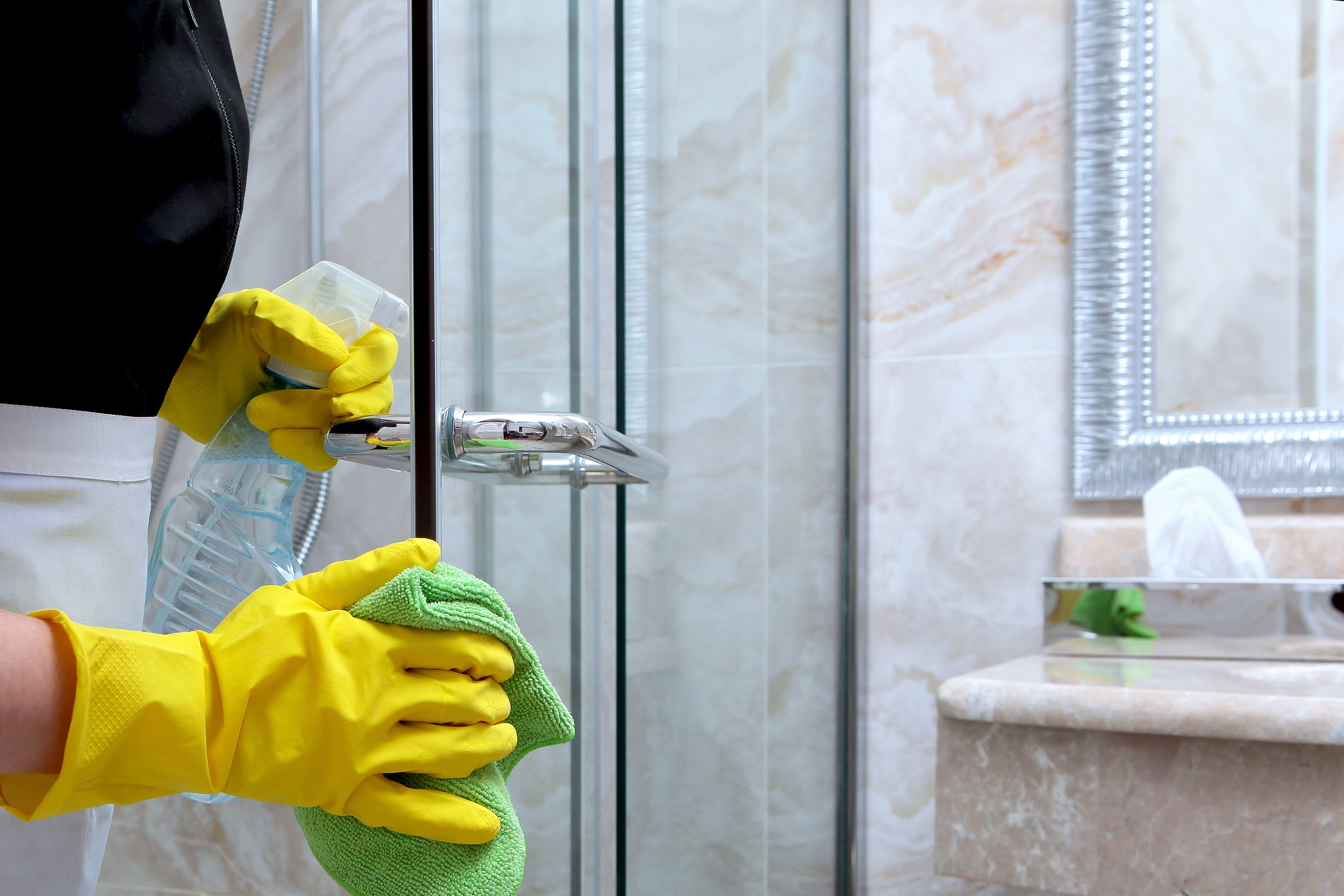Before the pandemic, travelers were hyper-focused on price and location when it came to booking their hotel stay. But as the hospitality sector has returned to pre-COVID levels of customer interest, travelers’ expectations of their hotel accommodations have changed dramatically.
In their 2023 state of the industry report, the American Hotel & Lodging Association (AHLA) revealed that enhanced cleaning routines remain the number one initiative hotel managements can take to make their customers comfortable with their stay. In fact, nearly half of all survey respondents stated that cleanliness and cleaning standards ultimately determine where they choose to stay while traveling.So what does that mean for hotel owners? While consumer interest in pandemic precautions (such as masks and temperature checking stations) has waned, it’s still vitally important for hotels to upkeep their cleaning regimens, especially in guest rooms and common areas.
In this guide, we’ll walk through the top cleaning investments to consider in order to retain your current customers and attract new guests.
Four Investments for Hotels To Consider
Hotels are exploring a number of investment strategies to help redefine their benefit proposition, including the following:
-
Co-branding with trusted partners
Travelers may not be as loyal to hotel chains as they once were, but they are putting their trust in familiar branded cleaning products. At least that’s the thinking behind Hilton’s partnerships with Lysol parent company RB. Hilton’s CleanStay with Lysol Protection leverages the cleaning brand’s reputation as part of its strategy for assuring travelers of regular disinfection. As Hilton put it, “The scientific expertise of RB is second-to-none and the use of its products assures consumers around the world of a safer stay.”
Partnering with a trusted or innovative provider of cleaning products demonstrates a visible willingness to invest in cleaning best practices.
-
More visible cleaning
Housekeeping has always been critical to hotel success, but the way cleanliness looks at hotels is changing. Once a behind-the-scenes operation, guests now want clear signs of cleaning activities. The increasingly popular “last cleaned” charts in guest rooms and public areas are one example of making cleanliness more visible.
More visible cleaning also means seeing that once-hidden work in action. For example, several hotels are using electrostatic sprayers or UV technology to sanitize luggage before it enters the hotel. In other cases, housekeeping has become more visible in the form of cleaning certifications. By receiving a certificate from third-party cleaning evaluators, hotels have shareable proof of their commitment to promoting clean and healthy experiences for guests and staff alike. As you work to improve your facilities’ air quality, sanitation efforts, and other cleaning initiatives, look for certifications that validate your hard-earned efforts.
Some building occupants have reported feeling comforted by the gentle hum of autonomous vacuum sweepers at work, as it's demonstration of cleanliness that works round the clock. That’s because commercial robot vacuums, like Whiz, developed in partnership with Brain OS and ICE Robotics, allow employers to spread staff members out across the facility and give them the tools to do more on their own.
-
Reprioritized amenities
Hotels are rethinking the amenities that once proved to be part of their draw. As an example, some hotels are revamping their public spaces, such as pools and gyms, to prioritize cleaner areas for guests. That could mean staffing cleaning attendants to wipe down equipment, or replacing shared amenities like shared food or drink stations with packaged snacks and beverages.
Luxury brand citizenM is removing many of the classic amenities—think shared room phones and directories—through its global app. The app creates an entirely touchless experience from the front door to the guest room. Through the app, guests can open their door, order food, open blinds, turn lights off and on, access the hotel directory, and check out.
Other hotels are providing no-touch room delivery with robot-delivery systems. Room service robots are capable of delivering meals, drinks, groceries, towels, and other amenities without need for human contact.
-
Alternative material solutions
Hotels considering more dramatic changes are investing in new material solutions to give a greater perception of clean. Some properties are removing hotel bedspreads in lieu of crisp white sheets that present a visual image of cleanliness. Experts note that some properties are replacing carpets and other textiles with hard surfaces that may seem to be easier to clean and sanitize. However, as Hotel Management reports, this is not always an effective swap. More frequent cleaning taking place today can cause degradation of hardwood and tile solutions. What’s more, guests still demonstrate a preference for soft surfaces. Investing in appropriate cleaning solutions may be a better bet for hoteliers rethinking their materials—surveying guests and suppliers can help identify the right solution.
Ample Opportunities to Recreate Hotel Experiences
With hotels around the world rethinking their approach to securing guest traffic, there’s no wrong answer. There are as many options for creative investment as there are hotel properties.
Fortunately, these investments don’t have to be cost-prohibitive. Solutions like Whiz are available with a subscription model, allowing property owners to cost-effectively pilot the solution in their hotels. With the right investment today, the hospitality industry can better protect its workers, its guests and its bottom-line.








